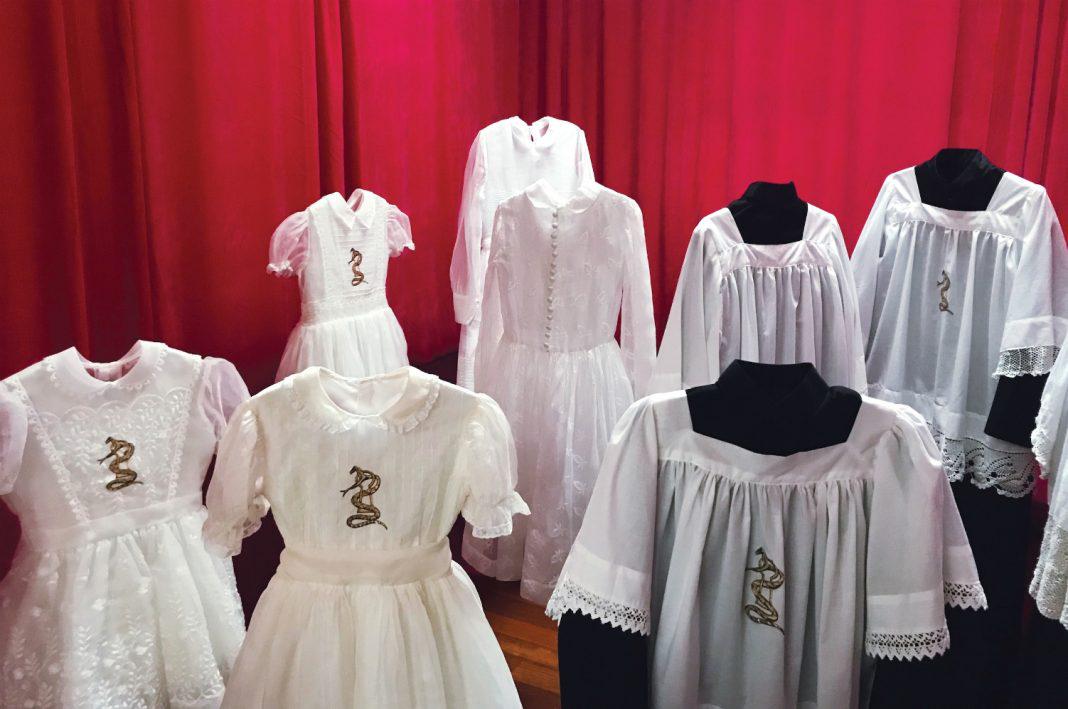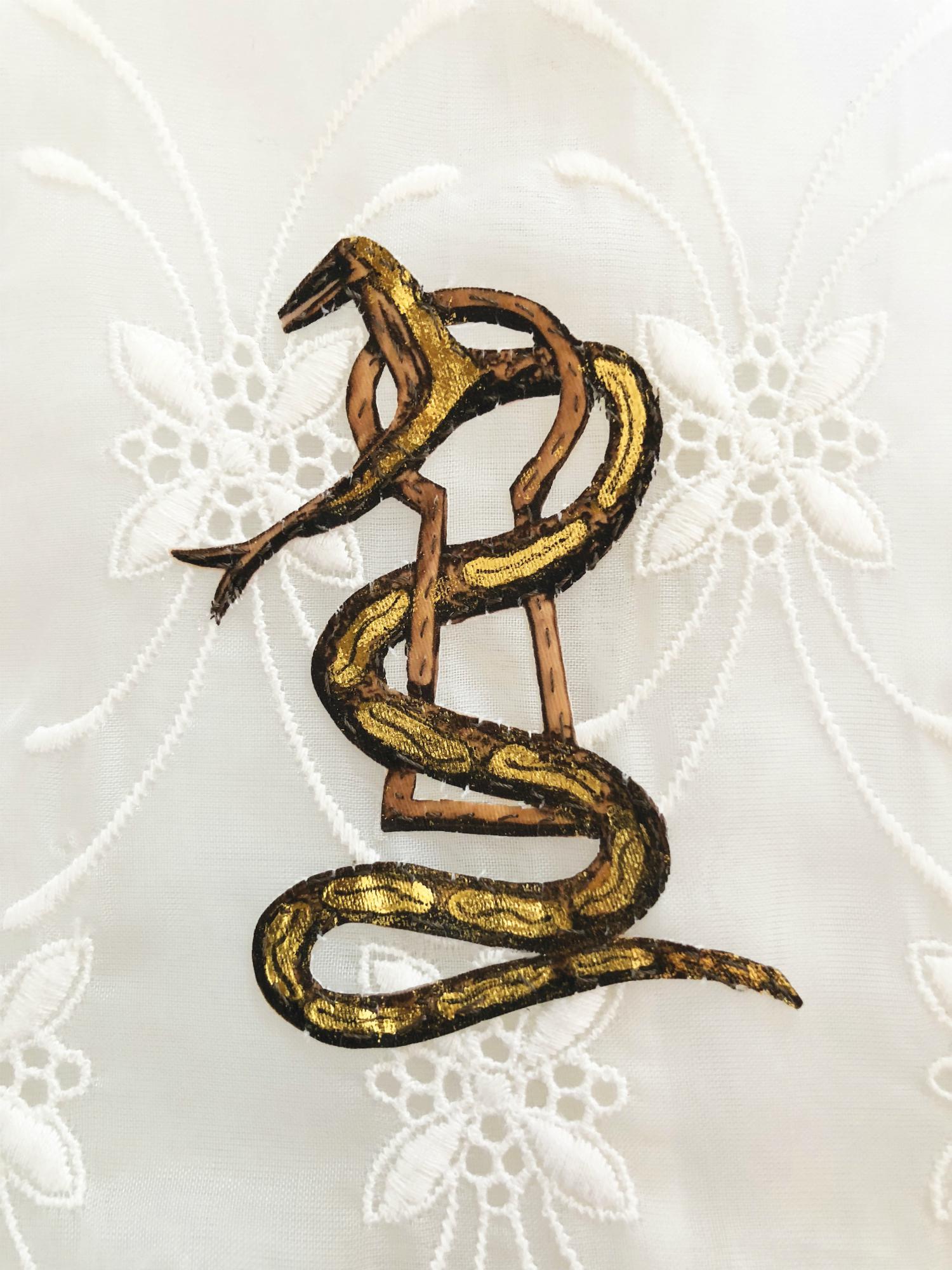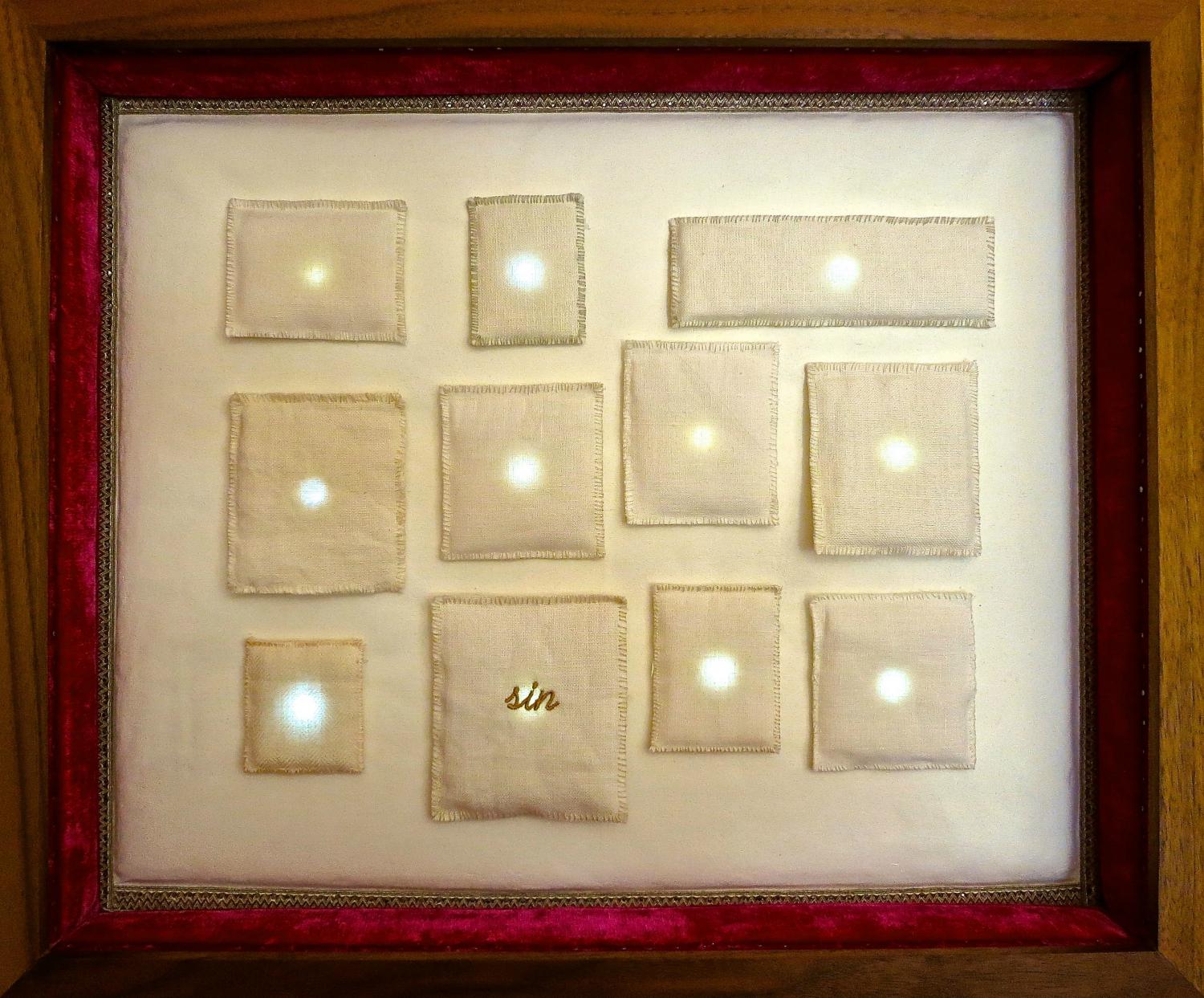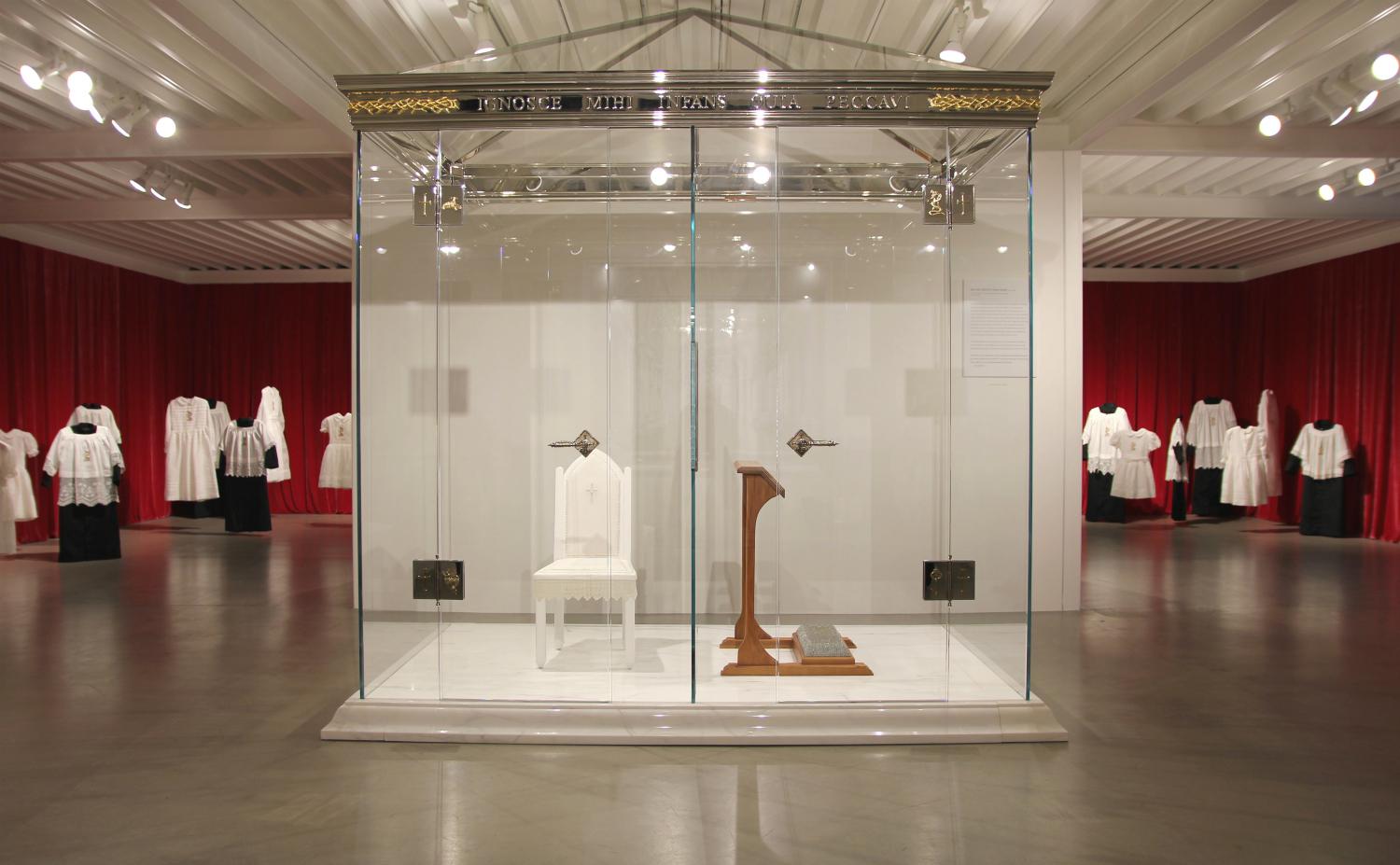|
A Catholic University Is Hosting an Art Show That Confronts the Church’s Sex Abuse Scandal
By Catherine Womack
Church was a refuge for Trina McKillen when she was young. Growing up in Belfast, Northern Ireland, during “the Troubles” of the 1960s and ’70s, her neighborhood was a hotspot for political violence. When bomb scares threatened her elementary school, McKillen and her classmates were led into a nearby church for safety. “That had an unbelievable effect on me,” the artist says. “I felt like, well, they might bomb the school, but they’ll never bomb the church. So I had this sense that the church could never be destroyed, that I was always safe there. I have so many beautiful memories of sitting in church. I remember feeling this sense of transcendence, an escape from the war in our streets outside.” McKillen eventually left Northern Ireland for Dublin, Ireland, where she attended art school. She then moved to Los Angeles, where McKillen’s made her home since 1989. She doesn’t attend Mass much anymore, and she and her Jewish husband did not raise their son Catholic, but she still prays daily. “You can’t take the Catholic out of me,” she says. Because she viewed the church as a safe place full of beauty and peace, McKillen was deeply upset when news came out in the 1990s that Irish priests had been sexually abusing children for decades. The stories broke her heart. She couldn’t stop thinking about the victims, the children whose lives were shattered. The artwork McKillen created in order to give voice to those children is now the subject of an exquisite new exhibit at the Laband Art Gallery at Loyola Marymount University. Confess: An Installation by Trina McKillen opens on the campus of the Catholic school this Saturday, January 19, and runs through March 23. For a long time, McKillen’s art was rooted in photography. But when she was in her early 40s, she experienced a personal health crisis that led to a reevaluation of her practice. Frightened that she might not survive a cancer scare, McKillen reexamined how, why, and what she created. “I really thought that I was dying,” she says. “And I had a very, very clear thought: If I live, I’m going to have to be very honest and brave. My biggest fear was leaving this world and not having been brave for my son. I wanted to show him that you have to do what you have to do in this world, regardless of what people think.” And so McKillen collected tiny scraps of Irish linen and began to sew them into small rectangular squares. At the time, she wasn’t sure why she was doing this or what exactly she was making. “Then I started to embroider words onto the linen that had to do with sexual abuse in the church,” she says. “It wasn’t planned. It evolved organically. I was drawn to the ritualistic element of making these little squares. They made me feel better. It felt like praying, like they were giving me an answer.” McKillen took a plastic bag full of these little linen squares with her to Ireland on a trip to visit her parents. Her dad was curious: What are they for? Why are you making them? McKillen responded: “What if they just make me happy?” “Well, then that’s the best reason of all,” her mom replied. “I hope there’s big money in Los Angeles for little linen squares,” her dad said. McKillen’s mother was a devout Catholic with a deep spiritual faith, but after the church’s sexual abuse scandal, she stopped going to Mass. She couldn’t bear to look at the priest’s face. “She was 84 years old and I was just heartbroken,” McKillen says. “I thought to myself that if my mother is feeling that way—and she is the soul of the church—then the whole church must feel that way on a deep level. So I decided I had to do something, and then I had this idea for a glass confessional.” Forgive Me Child for I Have Sinned is McKillen’s life-size, transparent confessional installation piece. Meticulously designed and crafted out of glass, marble, wood, linen, metal, and nickel-plated composite, it welcomes light into a space that is traditionally dark. Instead of a seat for a priest, there is a small white chair suitable for a child. In this confessional it is the priest who is expected to kneel, confess, and ask for forgiveness. Every detail has significance. Ornate door handles read “SHAME” and “BETRAYAL.” To embellish the hinges on the confessional doors, McKillen used clay to hand sculpt a sacred heart, lamb, cross and her own original symbol—a keyhole with an entwined snake—before casting them in brass. That same keyhole-and-snake symbol, a metaphor for the evil of sexual abuse, reappears elsewhere in the exhibit. In The Children, a collection of 40 white communion dresses and altar boy vestments, the symbol is embroidered with gold leaf on the front of the garments. Over the last decade, McKillen used eBay and Etsy to source and collect these small white garments from around the world. A real little girl in France, England, or Ireland once wore each communion dress, and McKillen documented the story of each. Likewise, the elegant lace that embellishes them was collected from Russia, Belgium, China, and Australia. Most of the vestments were hand sewn by McKillen and her studio assistant using Irish linen, a nod to McKillen’s aunts who worked in linen factories in Northern Ireland. McKillen’s linen squares are now backlit and framed, appearing here as The Stations of Hope, a series of 14 intimate pieces that abstractly allude to the Stations of the Cross. When she was young, the Stations of the Cross disturbed McKillen with their gory depictions of Jesus’s blood and pain. Here, the hope and purpose the artist found during the process of creating these pieces emanates from the work. Tenured LMU English professor K.J. Peters and Laband Art Gallery director Karen Rapp were convinced that their Catholic campus was exactly the right location for this show. The duo took campus decision-makers to see the work, and everyone who encountered it agreed. This is artwork that arises out of love for the church, not a desire to disparage it, and it is necessary and important to engage with its subject. “It directly involves the community, and it also speaks to the tremendous Jesuit philosophy of social justice,” Rapp says. “I know one thing about our student population: that this is something they will care deeply about. I love the idea that in an art gallery, people can come and ponder. They don’t have to read or talk, they’re just here to see it. It can help people make sense of what happened and open up a dialogue. That makes me very proud.” In a way, McKillen made this artwork specifically for this audience. “Growing up in Belfast, the church was my refuge, my solace in the middle of a war zone,” she says. “I miss what the church was to me, and I think all of us that are Catholic have a responsibility to face this issue.”
|
.
Any original material on these pages is copyright © BishopAccountability.org 2004. Reproduce freely with attribution.



